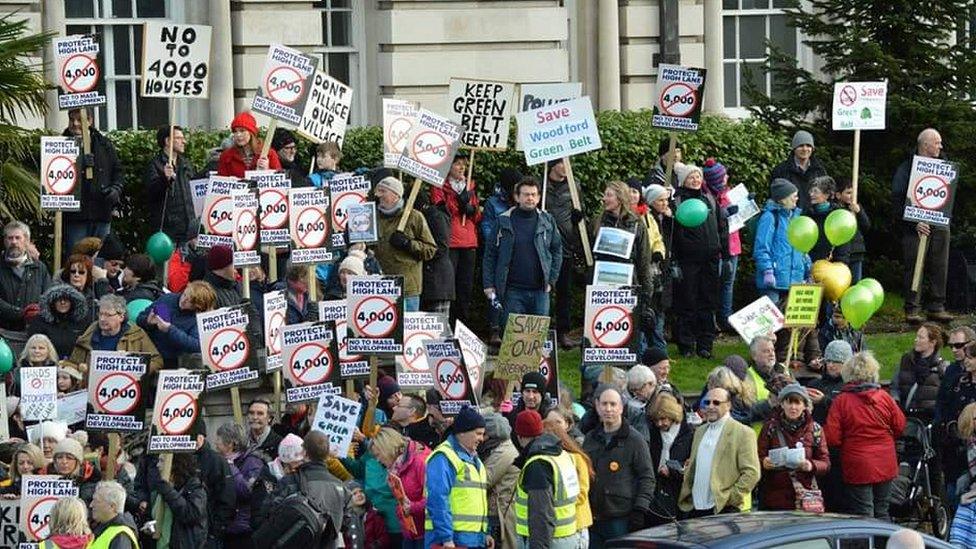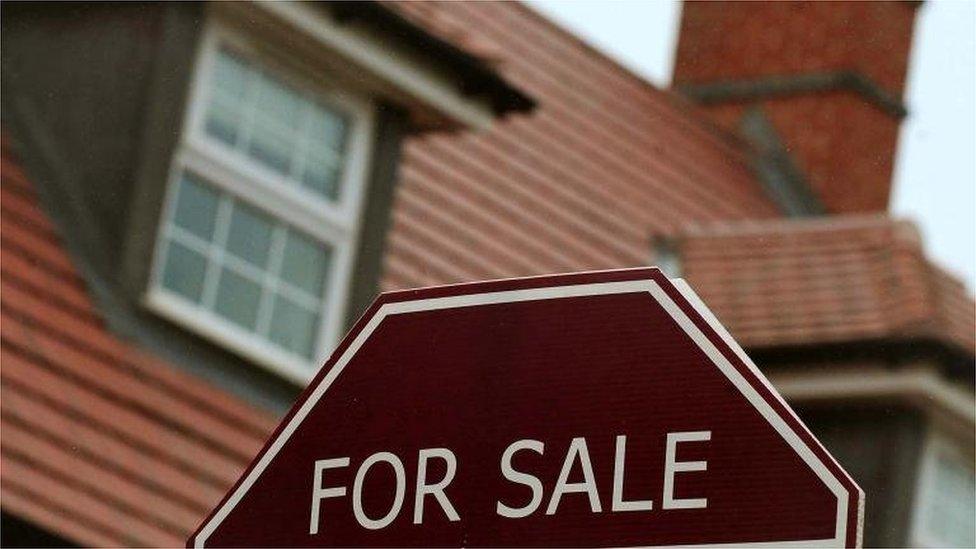Housebuilder L&G wants 'reassessment' of green belt
- Published
One of the UK's largest housebuilders has called for a "critical reassessment" of green belt land to help solve Britain's housing shortage.
Legal & General chief executive Nigel Wilson said that if 1% of green belt was released for building, it would be enough for up to one million new homes.
And the L&Q housing association said Britain faced a choice: build on "green field" or continue with a shortage.
The comments come ahead of a major government announcement on housing.
A controversial white paper on revitalising England's housing market, which has been delayed three times, could now be published next week.
It is expected to propose a relaxation of planning rules and that local authorities should be allowed to build more council houses for rent as well as purchase.
"The green belt has doubled in size in the last 20 years, it is 4 million acres now," Mr Wilson told the BBC.
"We've got to have a much greater critical assessment on what is and what isn't green belt.
"Nobody wants to build on the Chilterns, or the Malvern's or the beautiful parts of Britain, but there are lots of areas that have been designated green belt which are really brown field sites and we absolutely have to build on more brown field sites," he added.
From Nimbyism to Pimbyism
Theresa May has set a target of building a million new homes by 2020, a target that many house builders believe will be missed.
Sajid Javid, the cabinet minister responsible for housing, has said the government's plans will be "radical".
Mr Wilson said: "I think there was a great obsession in the UK with house price inflation, the way you get house price inflation is denying supply and that is what has happened for 30 years in the UK."

Plans to build on green belt spark opposition, such as this protest outside Stockport Town Hall
"We have to reverse that going forward - as we go from Nimbyism, not in my back yard, to Pimbyism, please in my back yard," he said.
The moves on releasing more land were backed by David Montague, the chief executive of L&Q housing association, which builds thousands of affordable homes for purchase and rent.
"If you look at what we're doing here in Barking Riverside [in east London], we're building 11,000 new homes on brown field land, and of course it makes sense to prioritise brown field land," Mr Montague said.
"But if you go just a few miles up the road to Chelmsford in Essex, we are working there on a green field site with a Tory council with the support of the local people to produce a 4,000 home new town.
"The key thing is that we need an adult conversation about where we're going to build these homes.
"The alternative is that we just deal with the consequences of not building enough homes and that means more people in temporary accommodation, more people living on the streets, more people not about to afford to buy a home of their own, it means rising waiting lists for rising housing benefit bills.
"We have a choice, we either find the land to build the homes we need, or we deal with the consequences of not doing that."

The housing shortage is blamed for pushing up prices
The government knows that any moves to relax planning regulations will be controversial.
Green belt land often surrounds towns and cities where people want to live, and so is highly prized by developers.
'No need to use green belt'
Shaun Spiers, chief executive of the Campaign to Protect Rural England (CPRE), said that unravelling the green belt risked losing precious countryside.
"We are an incredibly crowded country, the most populous big country in Europe, and [green belt] is the countryside nearest to where people live," he said.
"It stops towns merging into each other, it is an incredibly valued resource. There is loads of land with planning permission in the country already.
"There is enough brown field land to build over a million homes. We don't need to be building on the green belt to solve the housing crisis," Mr Spiers said.
CPRE figures reveal that 360,000 houses have been proposed for green belt land in England - up from 81,000 in 2012 - as local authorities come under pressure from the government to hit the one million homes target.
Although the housing white paper will only deal with England, there is anecdotal evidence that similar controversies over green belt protections have affected Wales, Scotland and Northern Ireland.